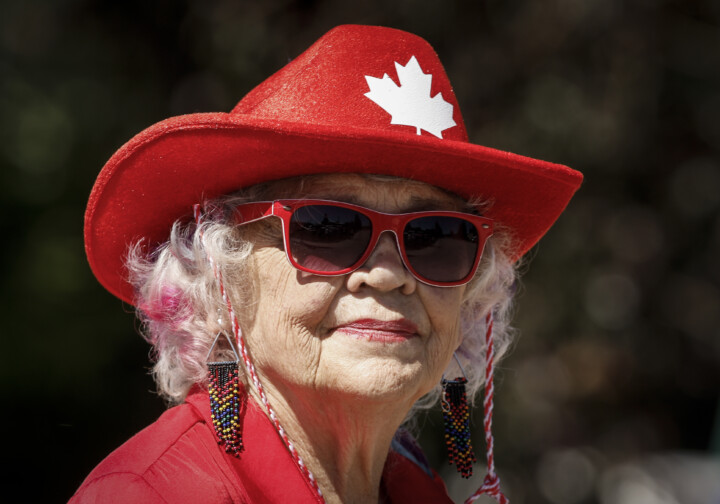Over the past several weeks, The Hub has published a series of articles and podcast episodes that aim to understand the threat that Bill C-11, the Online Streaming Act, poses for Canadian consumers, content creators, and Canada-U.S. bilateral relations. Its overwhelming conclusion is that the legislation risks disrupting the growing and well-functioning online marketplace to the detriment of consumers and creators alike.
As Graham Davies from the Digital Media Association set out in a recent episode of Hub Dialogues, the only solution—the proper “fix”—is to fully repeal the law. Regulatory changes or directives through the CRTC are necessary yet insufficient to minimize its harms.
Yet, as I’ve written before elsewhere, the repeal of C-11 doesn’t necessarily end the conversation about how federal policy might support Canadian culture. Although some would argue that cultural subsidies are unnecessary—that markets alone should support cultural outputs—there will still be a (limited) role for the state to support artists and creators in general and certain types of culture such as Indigenous language or history-related content in particular.
Even if a government repeals the Online Streaming Act, the pre-Bill C-11 policy framework, including the CanCon mandates and quotas for traditional broadcasters as well as the National Film Board, Telefilm Canada, and various other mechanisms for cultural subsidies will ostensibly remain in place. These three agencies and programs alone represent more than $600 million in annual spending. And that doesn’t even account for the CBC and its uncertain future.
The Canadian government, in other words, is still going to be in the culture business. An incoming government will need to think carefully therefore about how it intends to use these policy instruments and institutions to advance its broader governmental goals. It must in short have a cultural policy.
In hindsight, the Harper government lacked such a policy. It was responsible for some important initiatives like the War of 1812 commemoration, but these tended to be one-offs as opposed to part of a broader policy framework. The result is that while the government made some progress in advancing its conception of Canadian culture, it failed to leave a lasting mark on the worlds of art, film, music, and television.
It’s important to start with a clear understanding of the policy tools that the federal government controls that touch on culture. They range from the major ones cited above to tax credits, copyright rules, and lesser-known pieces of legislation like the Status of the Artist Act. A proper overarching policy ought to bring coherence to these various policies according to some common ideas or principles.
The following is by no means meant to be an exhaustive list but it aims to provide some thinking about different aspects of a new cultural policy for Canada.
The future of CanCon
Traditional broadcasters argue that the CanCon regime—involving content quotas and mandated financial contributions—is asymmetrical and unfair. I agree. The problem with C-11 is it aims to fix it by extending the anachronistic model to new media as opposed to getting rid of it for everyone.
A far better approach would be to end the mandates and quotas for traditional broadcasters and replace the industry-funded Canada Media Fund with a new creator-driven fund that individual creators could tap to create pilots or other content that they could then sell or license not just to traditional domestic broadcasters but also online streaming services like Amazon or Netflix.
Such a shift would reconceptualize the CanCon regime—including the Canada Media Fund—from a posture of cultural defensiveness to a more export-oriented, offensive one.
Income averaging for artists
Actors, artists, musicians, writers, and others in the cultural industries can have lumpy incomes year-over-year that overstate their overall income and wealth. Industry voices have long argued for a regime of income averaging for tax purposes. This would mean that rather than paying personal income taxes on an annualized basis, individuals would calculate their tax owning based on an income average of multiple years.
Not only did Canada have a form of income averaging from 1971 to 1982, but there have also been legislative attempts to restore it in recent years. In 2012, for instance, an NDP MP put forward Bill C-427 to establish a policy of income averaging. At the time, the Parliamentary Budget Office estimated the legislation would cost approximately $25 million per year if fully implemented.
This is something a new government should take up. Shifting to an income-averaging model would better reflect an individual’s overall income levels. It would also represent a form of policy support that would follow market forces rather than supplant them.
Copyright reform
There are growing calls from the music industry to reform Canada’s copyright regime to better support creators on various fronts, including changing the definition of sound recording to ensure that artists and labels receive royalties from television, film, and streaming platforms, reforming the role and function of the Copyright Board, and even granting ownership to artists of their copyrights 25 years after the date of transfer instead of 25 years after his or her death.
An incoming government would have to carefully study these proposals and others to strengthen Canada’s copyright laws and regulations but in theory, they represent the type of market-enabling reforms that can better support cultural creators without relying on quotas, mandates, and direct subsidies.
A renewed focus on history and citizenship
The past year or so has been marked by a high degree of social attenuation and growing concerns about the state of Canadian pluralism. The next four or five years will mark various historical anniversaries, including the 80th anniversary of the liberation of the Netherlands and the end of the Second World War, the 75th anniversary of the start of the Korean War, the 25th anniversary of the 9-11 attacks, and the 100th anniversary of the Matchless Six, the great group of women who were not only the first women to compete but also win a number of medals at the 1928 Amsterdam Olympics.
These represent major opportunities to leverage Canada’s constellation of museums and other cultural institutions to produce cultural outputs that tell the Canadian story. Why not for instance a National Film Board or Telefilm Canada equivalent of Band of Brothers using Canadian talent to mark the liberation of the Netherlands?
Although these policy ideas aren’t the totality of a new cultural policy, they’re a good start. They shift Ottawa’s policy framework in a modern direction that reflects new technologies and is responsive to contemporary creator needs and consumer demands. A core assumption is that Canadian actors, musicians, writers, and other creators can compete in the global cultural marketplace if the government lets them. The first step of course is to repeal the Online Streaming Act.
In 2025, The Hub intends to produce more commentaries and podcasts on the subject of a new cultural policy for Canada. We’ll aim to think more comprehensively about the role of government, different policy instruments, and how best to support our rich network of artists and creators across the country. The key is to eschew C-11’s effort to go backward. Canada needs a cultural policy that looks forward.
This article was made possible by the Digital Media Association and the generosity of readers like you. Donate today.











